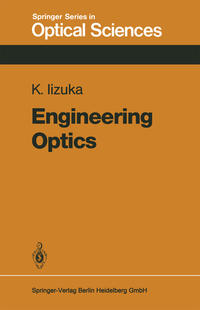
"Which area do you think I should go into?" or "Which are the areas that have the brightest future?" are questions that are frequently asked by students trying to decide on a field of specialization. My advice has always been to pick any field that combines two or more disciplines such as Nuclear Physics, Biomedical Engineering, Optoelectronics, or even Engineering Optics. With the ever growing complexity of today's science and technology, many a problem can be tackled only with the cooperative effort of more than one discipline. Engineering Optics deals with the engineering aspects of optics, and its main emphasis is on applying the knowledge. of optics to the solution of engineering problems. This book is intended both for the physics student who wants to apply his knowledge of optics to engineering problems and for the engineering student who wants to acquire the basic principles of optics. The material in the book was arranged in an order that would progres sively increase the student's comprehension of the subject. Basic tools and concepts presented in the earlier chapters are then developed more fully and applied in the later chapters. In many instances, the arrangement of the material differs from the true chronological order. The following is intended to provide an overview of the organization of the book. In this book, the theory of the Fourier transforms was used whenever possible because it provides a simple and clear explanation for many phenomena in optics. Complicated mathematics have been com pletely eliminated.